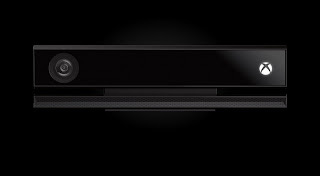Xbox One the gaming console that uses facial recognition technology to spy on you in your home

Kinect being bundled with the Xbox One, not only is there bound to be an increase in advertising engagement with the peripheral, but also the opportunity for more targeted advertisements. Xbox already utilise some form of minimal targeting, for example age and brand engagement, allowing them to serve personalised ads. “For example 18+ people; we can target these ads at people who haven’t used the LoveFilm app,” but Kinect and the Xbox One could allow them to take this to the next level.
“With the new Xbox One, the technology and Kinect has improved a lot,” commented the Technical Account Manager for Xbox LIVE Advertising, “so that actually the voice recognition, the way you speak to your Xbox and the transition between gaming and watching TV is a lot smoother, and hopefully we can transpire that into advertising that we do.” Gamers have already expressed concerns over the Kinect being able to spy on them and their habits, but it’s not quite at that level of CIA-grade espionage.
The attending Xbox LIVE Advertising Developer commented that they don’t actually receive a lot of the biometric information collected by Kinect. “This sort of works at two levels. There’s the game producers who have a different API, so a different set of code and system that they use, and they’ve got a lot more control of the whole thing,” he stated, “whereas from the advertising point of view we have a slightly more limited set, which is designed to protect the user. The company is very keen on protecting the user from any sort of abuse so we can’t do certain things.”
What could transpire in the future though is something that we’re already seeing with a lot of facial recognition technology and personalized information being used to target advertisements. For example, Kinect could detect how many users are in the room and could serve advertisements aimed at families, groups, or individuals. Additional information from your Xbox LIVE account could also influence these by using metrics such as your gender, age, location, media habits and more, and Microsoft are very aware of the potential around this.
“Xbox is moving more outside of the bedroom. We’re seeing much, much more people use it in living rooms where there is family, friends, there is lots going on, so there is a context of perceiving the content,” says the Senior Digital Art Director/UX Designer. “It’s not like when you’re at work when you sit in front of a screen and your experience is very personal. But with Xbox, it’s lots of people in front of once big screen. They are playing or watching together and advertising is being consumed in a totally different way.”
And like all advertising agencies, the Xbox team are just as interested in their audience. As an Xbox 360 user for around 4 years who never clicks on the ads and is fully aware on where they are placed on the dashboard, it was certainly interesting to hear their facts and opinions on the Xbox audience who do, and could potentially, engage with advertisements on the console.
The Xbox team are utilising something called ‘native advertising’ which is when the adverts are built into the actual content, as opposed to tacked on at the side or above. Statistics have shown that this sort of advertising achieves 52% more clicks than traditional advertising and combats ‘ad blindness’ – a situation where you automatically ignore advertising space on websites. However I and many other gamers are aware of where these ads are, negating this, so definitely expect a change in the future.
In addition to Kinect, Xbox seem very keen to push Smartglass and Surface, and while you’d expect an advertising firm to jump all over any additional opportunities to serve you ads, the Xbox team don’t actually have access and really aren’t that interested in having it unless it’s opening URLs or displaying visual content.

http://sticktwiddlers.com/2013/06/28/xbox-one-dashboard-created-with-advertising-in-mind/


